4 Questions Engineers Ask When Evaluating Cost per Kilowatt-hour of Energy Storage: Part 1

This post was written by Josh Weiner, Solar Expert Witness & Solar Engineering Expert. Mr. Weiner has been at the forefront of the solar energy industry for over 20 years and is an industry leader on solar-plus-storage engineering & design. Josh’s expertise spans both in-front of and behind-the-meter initiatives including residential, commercial, utility, grid-scale, and ev charging solar and storage applications.
Typically, the first figure developers and asset managers use to compare energy storage technologies is its dollar per kilowatt-hour ($/kWh) cost. But that seemingly simple metric may not be an accurate apples-to-apples one unless you’ve asked your battery manufacturer some important engineering questions.
To fairly compare the $/kWh cost of selected energy storage systems, we recommend your energy storage system designers ask the following four questions. In Part 2 of our series, we’ll explore technology considerations, applications and bankability.
Question 1: Is the battery vendor defining $/kWh in DC or AC watt-hours?
Storage, like solar, is becoming commoditized, so we need a common metric for pricing energy storage systems. Just like solar system dollars per watt pricing, you’ll need to have all vendors offer you pricing in either AC or DC kilowatt-hours. Their answers will lead to more questions; however, how are AC or DC kWhs defined? Which one includes the percentage of depth of discharge (DoD)? Are any parasitic loads included? What about DC-coupled systems, which may only have one inverter for both the PV and storage systems? Your engineer should know the answers to these questions to make a fair comparison of batteries.
Question 2: What about OpEx?
With batteries, it’s difficult to talk about capital expenditure (CapEx) without also talking about operating expenditure (OpEx). For instance, batteries are more expensive to maintain than PV systems due to their sensitivity to things like:
- Temperature (battery HVAC systems require routine maintenance)
- Fire suppression systems
- Augmentation schedule (e.g., “capacity maintenance agreement” to replace degraded and failed battery modules over time as they wear out)
The last category mentioned above is particularly problematic due to the replacement schedule of batteries being closely tied to their use-case application. Some projects may require battery replacements within 5 years, while others in 12 years, and some last well beyond 20 years. Therefore, it’s important to take into account different duty cycles, technology choice, and specific use cases to determine the appropriate OpEx.
In addition, recent data has become available showing that actual battery performance is often different than what’s warrantied, which unfortunately translates into shorter-than-expected battery life spans, and, therefore, more cost to the project owner.
Moreover, considerations such as auxiliary loads, thermal management and round-trip efficiency (RTE) also degrade over time, resulting in higher battery system losses, and, therefore, less return on investment. These are all OpEx costs that can be carefully calculated and accounted for, but only when a thorough understanding of project economics and underlying product configuration and technology are combined to identify the true costs of ownership (more about this in question 3).
Question 3: Does your $/kWh figure include DoD and efficiency factors?
Similar to a solar panel’s STC and PTC ratings, batteries can also be subject to a lower kWh production when deployed outside the ideal conditions of a test laboratory. In addition to different temperatures, your battery’s actual $/kWh will also depend on its usage profile, recommended depth of discharge, power-to-energy ratio, calendar life, and other factors that an engineer should evaluate. Therefore, when calculating $/kWh, the kWh figure in the denominator needs to be corrected for the actual usable energy of the battery, not the nameplate.
For example, a 100 kWh battery that’s limited to a recommended 80% DoD will need to be calculated as 80 kWh. Additionally, your engineer should account for the battery’s 1-way efficiency, which could be as low as 86% in California, according to the 2016 Self Generation Incentive Program (SGIP) iTron report of average lithium-ion RTEs.
In this 100 kWh example, for the nameplate rating price of $500/kWh for a lithium-ion battery system in California, we could use the following formula to reveal the adjusted $/kWh that accounts for usable kWh energy for a $500/kWh quoted price:
$500/(80/100 x 86/100) ≈ $725/kWh … a 45% price increase!
Consequently, when someone quotes you a price in $/kWh, always ask the above questions, or at least ask if the price is calculated to include discounts for RTE and DoD. If their answer is, “Yes, we absolutely took that into account in that pricing,” then you’re set to compare apples-to-apples pricing. If they aren’t sure what you mean, or it’s not showing up in any purchase agreements or POs, then that’s a good indicator you need to double-check the fine print and perhaps do your own calculations or consult with an engineer to evaluate all the factors in your battery choice.
Question 4: What’s your levelized cost of energy (LCOE)?
As we’ve seen, regardless of whether the $/kWh number offered is in AC or DC watt-hours, or defined as OpEx or CapEx for tax purposes, the total cost of ownership picture is still incomplete.
As with total dollars-per-kilowatt solar PV system pricing, you’ll want your engineers to evaluate the total turnkey price that includes everything needed to be placed in service. In addition to the cost of the actual energy storage hardware, your LCOE figure will need to account for the cost of labor, engineering and feasibility studies, permits, utility interconnection applications and field studies, protection relays, total kWh throughput (including annual degradation of capacity and RTE), etc.
As long as your engineer has accounted for the above kWh questions and typical project costs, you’ll at least be able to make a somewhat-simple price comparison to evaluate your energy storage system. Of course, if you’d like the help of SepiSolar’s “solar enginerds” to evaluate your energy storage choices, please contact us.
To read Part 2 of our series about evaluating technology, applications and bankability, sign up for SepiSolar’s newsletter, or follow us on LinkedIn, Twitter or Facebook.
Josh Weiner is CEO and Founder of SepiSolar. Follow Josh on Twitter at @SepiSolarJosh



2 comments
Pingback: Free SepiSolar Battery Excel Tool to Estimate the Future Price of Batteries
Pingback: SepiSolar Confidential: Meet Josh Weiner Through this Suncast Interview